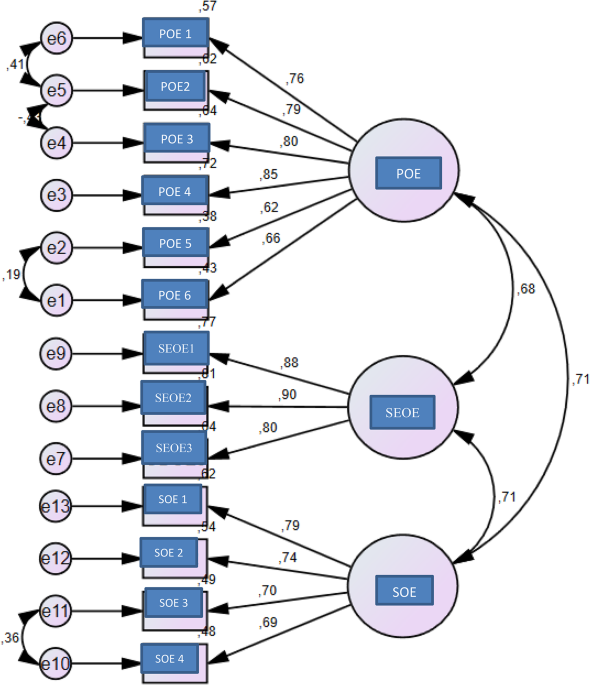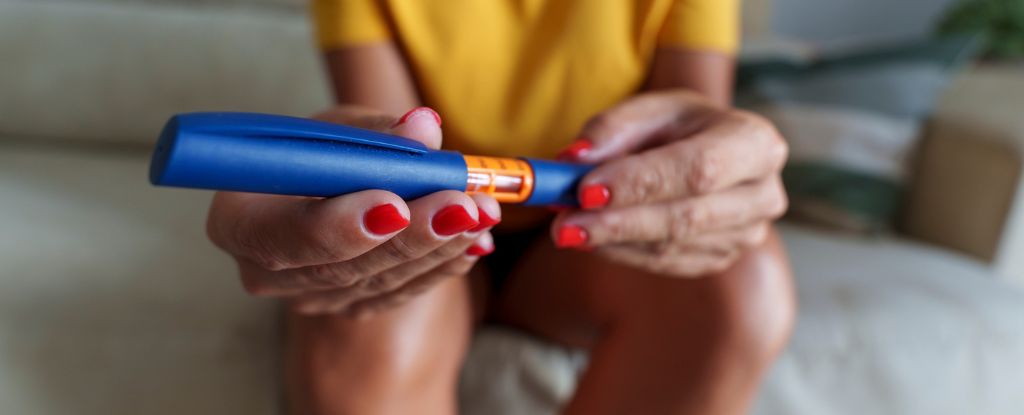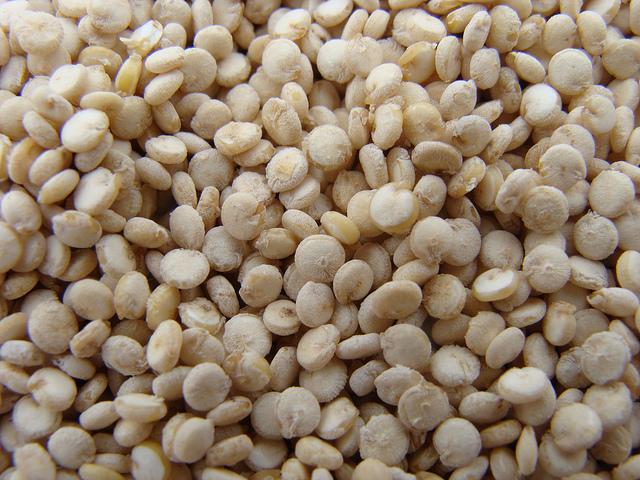Validity and reliability study of the Turkish version of the multidimensional outcome expectations for exercise scale (MOEES) in patients with cardiovascular diseases

The present study aimed to evaluate the validity and reliability of the Turkish version of the Multidimensional outcome Expectations for Exercise Scale (MOEES), which assesses exercise expectations in patients diagnosed with cardiovascular disease. Two items from the Self-Evaluative Outcome Expectations subscale were removed due to their disruption of the factor structure. Analysis of all sub-dimensions of the MOEES revealed high reliability, as evidenced by elevated Cronbach’s Alpha values. The intra-class correlation coefficient also demonstrated high reliability. Furthermore, confirmatory factor analysis indicated a strong positive correlation between the sub-dimensions of the scale.
Around 31% of the global population does not meet the recommended levels of physical activity, which poses a significant risk for various serious health conditions, such as obesity, chronic diseases, cancer, and cardiovascular diseases5. Physical inactivity is now recognized as the fourth leading cause of global mortality31. The American Heart Association highlights sedentary behavior and physical inactivity as modifiable risk factors for cardiovascular disease32. In recent years, global efforts to promote physical activity, exercise training, and improved cardiorespiratory fitness have become key strategies in preventing chronic diseases33.
There is a strong link between exercise outcome expectations and exercise behavior12. Individuals who are physically active tend to have higher outcome expectations compared to those who are inactive13. Accurately measuring these expectations is crucial for understanding them and developing interventions that effectively enhance them12. Without assessing outcome expectations, it becomes difficult to predict the results an individual may expect from exercise, and appropriate interventions may not be implemented to address potentially low expectations, hindering the customization of exercise programs to meet individual needs12 .
Accurately and reliably measuring outcome expectations is essential for creating more dependable and personalized exercise plans12. The “Outcome Expectations for Exercise Scale,” a commonly used tool, includes 9 items that evaluate individuals’ mental and physical outcome expectations12. However, this scale does not fully capture the multidimensional nature of exercise outcome expectations. In contrast, the MOEES, whose validity and reliability have been confirmed in this study, is a comprehensive questionnaire that assesses not only physical outcome expectations but also social outcome expectations—focusing on individuals’ interactions with their environment—and self-evaluative outcome expectations, which reflect personal goals and self-perceptions14. This multidimensional approach supports both individuals participating in exercise and health professionals in designing exercise plans, as it boosts motivation and allows for more tailored exercise planning14.
It has been noticed that there is a lack of a tool to measure exercise-related outcome expectations in our country. Through our research on the validity and reliability of the MOEES, we have successfully adapted this scale to the Turkish cultural context, providing a reliable instrument for use in both clinical settings and academic studies. Originally developed in English by McAuley and colleagues14, the MOEES has been previously validated and applied to elderly individuals and those with multiple sclerosis14,15. In 2022, Urell and colleagues translated the MOEES into Swedish and applied it to individuals with cardiac disease, further confirming its validity and reliability16.
In the factor analysis conducted by McAuley and colleagues, the social outcome expectations items “Exercise will improve my social status” and “Exercise will make me feel accepted by others” disrupted the factor structure. To resolve this, the model was adjusted by allowing a correlation between these two items14. Similarly, in our study, we encountered issues with the factor structure, prompting the removal of two items from the self-evaluation subscale: item 4, “Exercise will increase my mental alertness,” and item 5, “Exercise will give me a sense of personal accomplishment.” These adjustments were necessary to enhance the scale’s overall fit and reliability within the Turkish context.
To achieve a normal distribution in a Likert-type scale, it is recommended to include a sample size that is at least 5 to 10 times the number of items on the survey19. Given that the MOEES consists of 15 items, in our study, we ensured an adequate sample size by including a minimum of 150 participants, reflecting the recommended 10:1 participant-to-item ratio for the 15-item scale19 In comparison, Urell and colleagues included 74 participants aged 18 and over in their study16 while Wójcicki and colleagues conducted their research with 320 individuals aged over 5015. The high intraclass correlation coefficient (ICC) observed in our study may be attributed to the robust sample size.
The reliability of the MOEES was evaluated in several studies. Wójcicki et al. reported internal consistency values of α = 0.82 for the physical outcome expectations subscale, α = 0.81 for the social outcome expectations subscale, and α = 0.84 for the self-assessment subscale15. McAuley et al. found slightly lower internal consistency values, with α = 0.76 for physical, α = 0.77 for social, and α = 0.83 for self-assessment outcome expectations14. In Urell et al.‘s study, the internal consistency was α = 0.73 for physical, α = 0.84 for social, and α = 0.76 for self-assessment outcome expectations16. In current study, the internal consistency of the three MOEES subscales was α = 0.87 for physical outcome expectations, α = 0.83 for social outcome expectations, and α = 0.89 for self-assessment outcome expectations, with an overall Cronbach’s Alpha of 0.919 for the entire scale. These results suggest the scale has high reliability. Additionally, when comparing Cronbach’s Alpha values across studies, our findings show higher reliability, indicating that the Turkish adaptation of the MOEES is robust and consistent.
Present study also assessed the reliability of the MOEES using the test-retest method, which yielded high intraclass correlation coefficient (ICC) values: 0.924 for physical outcome expectations, 0.921 for social outcome expectations, and 0.929 for self-assessment outcome expectations. These results demonstrate greater reliability compared to the ICC values reported by Urell et al.16.
Confirmatory factor analysis (CFA) was conducted to assess the factor structure of the scale. The goodness-of-fit indices in our study, including X2/sd = 1.782, RMSEA = 0.072, NFI = 0.918, CFI = 0.962, GFI = 0.908, SRMR = 0.052 and AGFI = 0.856, all met acceptable thresholds, indicating a good model fit. These results are consistent with the findings reported by Wójcicki15 and McAuley14, though they differ from the less favorable outcomes observed by Urell16 and colleagues. Additionally, we identified strong positive correlations between the latent variables: 0.68 between physical and self-assessment outcome expectations, 0.71 between physical and social outcome expectations, and 0.71 between self-assessment and social outcome expectations. All correlations were statistically significant at the 95% confidence level, aligning with the findings from Wójcicki and colleagues15. The Turkish version of the MOEES is a reliable scale, and it is recommended that future research evaluate its reliability in populations, such as those with respiratory and neurological diseases.
To establish the structural validity of a scale, it is important to demonstrate its relationships with similar measures34. Wójcicki et al. validated the MOEES using the SF-12 scale, finding a strong correlation between physical outcome expectations and physical health status15. They also identified a statistically significant relationship between self-assessment outcome expectations and the SF-12, although the relationship between social outcome expectations and the SF-12 was not significant15. McAuley et al. used the Godin Leisure Time Exercise Questionnaire (GLTEQ), an accelerometer, and the SF-12 for validation. They found strong, significant relationships between higher activity levels (measured by GLTEQ and accelerometer) and physical, self-assessed, and social outcome expectations. Additionally, McAuley et al. reported significant associations between physical health status and physical, social, and self-assessment outcome expectations as measured by the SF-1214.
In our study, the validity of the MOEES was assessed by comparing it with the IPAQ and TSK-H scales. Statistically significant correlations were found between the MOEES sub-dimensions and both the total IPAQ score and the TSK-H, supporting the scale’s validity. A key strength of this study is the MOEES’s multidimensional structure, which differentiates it from most other scales by measuring not only physical but also social and self-assessment outcome expectations. This comprehensive approach allows for more detailed data collection and more precise interventions. Additionally, the MOEES aids in assessing individuals’ readiness for exercise prior to program development, offering valuable insights into their overall perspective on exercise14. The study’s methodological strength was bolstered by the use of highly reliable databases.
However, a limitation is the scarcity of validity and reliability studies on the MOEES in other languages, which limited available literature for comparison. Additionally, the study included a broad cardiac population rather than focusing on specific cardiac conditions, and did not account for participants’ BMI or physical activity levels, suggesting that future research could benefit from a more targeted and nuanced approach. Moreover, a potential limitation of this study is the Hawthorne effect, which may have influenced participants’ responses. As data collection relied on self-reported measures, participants might have provided socially desirable answers rather than reflecting their true experiences or opinions.
link







